























































































































Available exclusively from our sponsors. The birds are singing this morning. Wait... it’s February! The birds seem to be sensing what everyone else has, that January and February weren’t the winter months we are used to. If there is to be snow at all this year, it will be a March miracle. The March forecast so far looks to be cold, but relatively snowless.
As much as I (and I assume most people) love hearing songbirds in the morning, it doesn’t feel like we “deserve” it this year. I don’t know about you, but at the end of the work week, my weekend is more satisfying and enjoyable when I feel I earned it. If we don’t get the harsh winter weather this year, will spring be the same season of celebration?
I always wonder how people in temperate climates feel about spring without the four seasons. Around here, the first sight of snowdrops and crocuses can instill a feeling of pure joy. Spring is associated with rebirth, and you can surely see that all around us in the Mohawk Valley in springtime.
The birds aren’t the only ones celebrating spring prematurely (though if you read Matt Perry’s article this month, you will learn the pros and cons when birds do so). We also have much to sing about. This month we introduce two new writers to our amazing MVL writing team. Cassandra Miller will profile local artists, and Maryann Vanderpool-Imundo will explore local restaurants. We are thrilled to welcome them. Our March issue also includes our 10th Annual Guide to Local Maple Producers—truly, our region’s first sweet sign of spring! •
Our young neighbor across the street has actually set up a lemonade stand as I write this.
Riggie is roaming around and hiding in the advertising areas of the magazine. Next to him you’ll find a letter. Find all the Riggies and rearrange the letters to answer this riddle. Enter by the 15th of the month to be entered in a $100 shopping spree at one of our advertisers!

(Excluding media and banks) One entry per household per month. Mail to: Riggie’s Riddle, 30 Kellogg St., Clinton, NY 13323 or email: mohawkvalleyliving@hotmail.com

NOTE: Please enter Riggie’s Riddle and crossword puzzle in separate emails.
April we celebrate
2 words 9 letters

See the answer and winner to last month’s riddle on page 46!

In March we donned our green for St. Patrick, thank you very much. In
this garden “queen” and wear green’s complement as such.

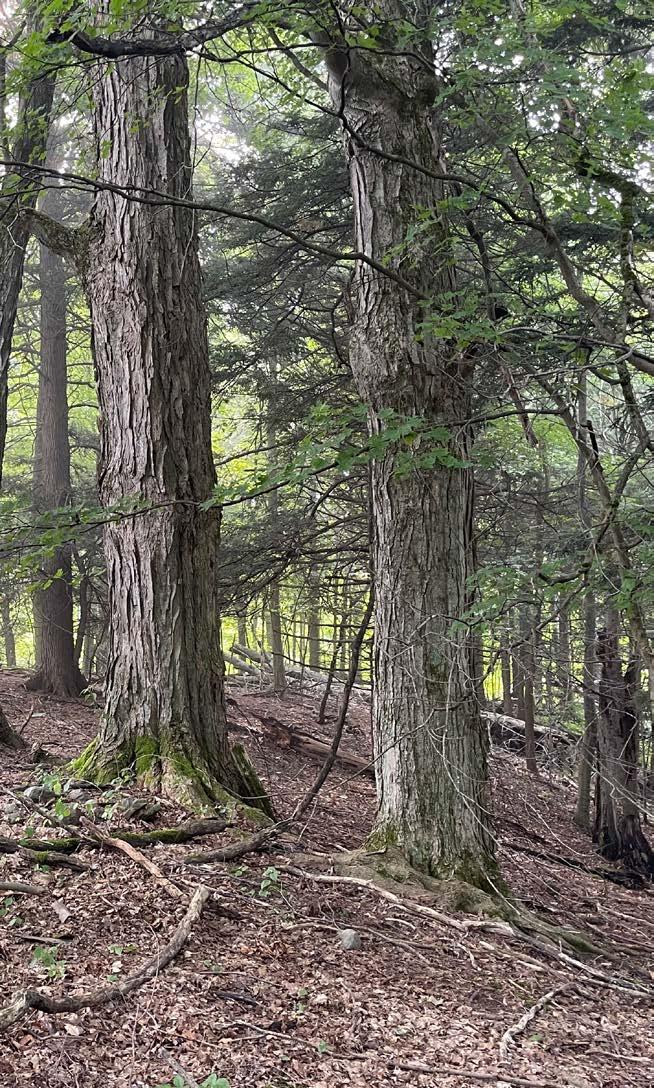



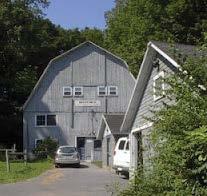

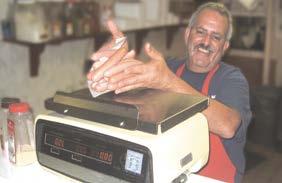

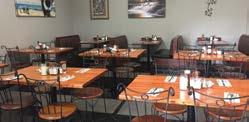
The ecology of the Mohawk Valley has undergone tremendous transformations over the past 250 years. For over ten thousand years, following a long period of glaciation, the land we now call home had been part of an expansive forest ecosystem that spread almost unbroken from the Atlantic Coast to the Great Plains and from the Arctic tree line to the Deep South. Not only are there few remaining vestiges of this original forest, but there are also relatively few descriptions of it. In the Mohawk Valley, accounts from early European settlement focus on their industriousness and their battles with nature, but not on the character or the ecology of the land. The nature his-






torian is left to piece together what it was like using forensics and accounts of the industry of the settlers. Much is made of the lack of a written language of the Native Americans that were the first occupants of the land, but the Europeans, at least the ones that settled this land, were illiterate when it came to ecology. We are only made privy to what was here based on what the settlers made use of. We know what wildlife was here primarily based on what animals were exploited (hunted and trapped) or what were deemed pariahs and exterminated. Likewise, we know what trees and plants were here based on those that were utilized in some way.

I’ve written before in these pages about deciphering the history of the land based on clues provided by the land itself and by the nature that exists there now. Plows had worked overtime to erase most of those clues, but some remain, and those that do are still legible. The contours of the land in the lost ancient forest were not flat and smooth but bumpy and rolling, like ocean waves. This kind of topography is known as “pit and mound”. To this day, in areas that never saw cultivation, pit and mound topography is still quite apparent. Each pit and its associated mound represent a large

live tree that pulled out of the ground. The pit is where a tree heaved out of the soil, and the mound is where its root mass and lower trunk fell and subsequently rotted away. In areas that were kept as woodlots or pasture, where plowing and crop planting never occurred, we can know the precise places where ancient trees once stood and even in what direction they fell when uprooted by windstorms. Depending on the character of the soil, pits and mounds may last for a thousand years, thereby giving us insight into the severity of storms which hit the region centuries ago. Pit and mounds that align with each other, and appear to be the same age, are indications of a specific storm that
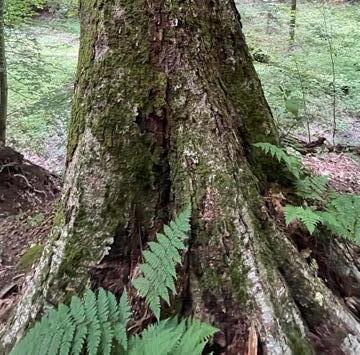

section of our sanctuary’s woods, I found an area where multiple pits and mounds aligned in the same direction. It spoke of a windstorm event that came from the southeast and uprooted dozens of old trees. The damage from the single storm wasn’t widespread enough to have been caused by a hurricane but was more likely the result of a microburst or straight-line winds. Based on the age of trees that subsequently grew on top of the mounds, I estimated that the storm occurred approximately 120 years ago. This roughly corresponds with a severe storm that took place in 1899 (according to a contemporary newspaper article) and was
responsible for widespread damage in the area – including toppling one thousand hop poles at Spring Farm. It is fascinating to think that trees which no longer exist can corroborate an event that happened more than a century before.
A forest growing on land that is flat and not dominated by pits and mounds, tells us that the land experienced cultivation by the plow. By determining the age of the oldest trees growing there, it is possible to establish approximately when the field was abandoned. The presence of stone dumps on the edges of fields and former fields informs us that the land was once used for cultivating crops. If it had been used for growing hay or pasturing livestock, there would be no corresponding stone piles. In unbroken soil, stones remain below the surface, held in place by plant roots. By contrast, in plowed soil, lose stones continually percolate to the surface and require removal. Another indicator of a formerly cultivated field is the presence of terracing. If the land at the edge of a field appears slightly higher than the ground in an adjacent hedge row or woodlot, that land has a history of being plowed. The presence of fences indicates that livestock was kept on the land. Typically, a fence is erected to keep animals in their pastures and out of crop fields. In the Mohawk Valley, there are still some old stone fences, albeit nowhere near the number found in New England. Most of these stone

fences date back to the first decades of the 19th century. The stones were used, not so much for their aesthetic beauty, but more out of practical necessity, since prior intensive forest clearing left little available timber to construct wood rail fences, which were far less labor intensive to build. In most of our region, wooden rail fences prevailed. That being said, I’ve found scant evidence of them. However, the barbwire fences that replaced them after the mid19th century are ubiquitous. Finding old trees with barbed wire going through their centers can help you age approximately when the wire was strung. If the wire is embedded in the center of a tree that is over one hundred years old, you can assume the wire fence is at least a century old.
I used to wonder how some of the oldest trees in our woods managed to avoid getting

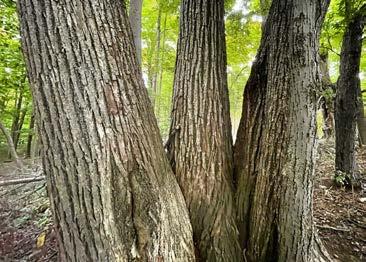
 Uprooted trees result in “Pit and Mound” microtopographical features
Basswood trunks rise from a former stump
Uprooted trees result in “Pit and Mound” microtopographical features
Basswood trunks rise from a former stump

cut down. I later learned that some of them had been cut down and, like a phoenix from the ashes, they managed to regenerate themselves. I first noticed this regarding our oldest Yellow Birch tree. This birch stands on the side of a wooded gorge with its trunk leaning at an eighty-degree angle and its roots firmly gripping the sloping terrain. The tree is about seventy feet tall and has a healthy crown which spreads out widely. Its upper branches mingle in the canopy with neighboring trees on either side of the ravine. Going by the tree’s girth and the appearance of the bark on the lower portion of the trunk, I originally aged the tree at around 140 years. However, I then noticed the existence of a small cavity located near the base of the trunk. Peering into it, I could clearly make out what looked like an old, bleached tree stump – one nearly entirely concealed inside the tree. This discovery led me to reevaluate the tree’s age and come up with an alternative explanation for what I was seeing. Presumably, in an attempt to fell the tree, a large wedge had been cut out of the old trunk. But then for some unknown reason, perhaps because of its location on the side of a gorge, the tree wasn’t felled, but was left standing. Interestingly, judging by the pattern of the cut marks on the wood, the wedge was cut out with a chainsaw. This confused me. Since chainsaws were not widely used for logging in the country until the 1950s and 60s, how could the birch be as old as it appeared? As it happens, birch trees have a remarkable ability to regenerate themselves from their stumps and roots. If one gets cut down, often the stump will re-sprout, or the nearby roots will put up a new trunk. I concluded that the tree’s trunk survived being notched; the living part of the wood and bark on the opposite side of the trunk survived and eventually grew over the old wound.
Birch trees are not the only species capable of regeneration. American Chestnuts and American Beech trees are famous for it. Although American Chestnuts trees are rare in the Mohawk Valley (even before the Chestnut Blight), beech trees are common, and we have several at the nature preserve that are more than a century old. Some mature beech trees in our woods had been cut down 30 years earlier, but their stumps remain alive, and a few continue to put up new growth from their rims. Back in the spring, I discovered that one of our oldest living beech trees had, in fact, been cut down as far back as 150 years ago. Subsequently, the tree sprouted from its stump and lived to dominate the tree canopy once more. As was the case with the Yellow Birch, there was a small hole near the base of the tree which served as a window into the tree’s past. There, hidden deep inside were the rotten remains of the original tree’s stump. Long parallel creases in the tree’s bark that extended twenty feet up the trunk told me that several new trunks had sprouted from the stump’s edges. Ulti-
The Eclectic Chic 2044 Glenwood Plaza Oneida, NY 13421
Open 10am – 5pm daily


mately, they fused together, thus creating the single trunk that stands today. It was a remarkable resurrection story. The only blemish on the tale is that the tree is now suffering from Beech Bark Disease, which will effectively put a limit on its existence. It’s conceivable that the below ground portion of the tree, the roots, will live on and continue to sprout, but it’s unlikely it will ever produce a tree that is free from the disease.



American Basswood trees also can regenerate themselves from their stumps and roots. At one tree border at the nature preserve, a number of basswoods stand along an old barbed wire
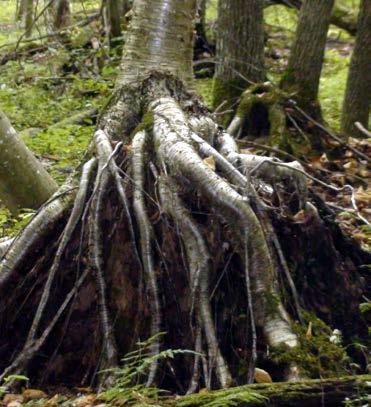
fence line. A few of the trees are very large and have multiple trunks emanating from the same place on the fence line. Since a basswood tree often responds to being cut down by putting up three or more new trunks from its stump, we can assume the trees were cut down around the time that the fence was strung. That year can be approximated by estimating the age of the multi-trunked trees, which is one hundred years. This age is corroborated by trees along the same fence line that have grown around the wire. Fifty feet to the south of the largest multi-trunk basswood, and along the same fence line stands one of the most remarkable trees on the property – our oldest Sugar Maple. Barbed wire going through it on more than one side indicates that it once stood on the corner of a fenced-in pasture. Terracing on its west side, as well as the presence of a stone dump, informs us that the field to the west was cultivated for crops. The purpose of the fence was to stop cows from entering the field.
Based on its impressive girth and the appearance of its bark, the Sugar Maple that we refer to as the “King Maple” is well over 200 years old. Its growth pattern informs us that, from its earliest years, it grew alongside a cleared field. If it had grown in forest conditions, with trees on all sides, it would have developed a long, straight trunk. Instead, the King began branching out low on its trunk. The low branches have become especially






massive and do much to contribute to the tree’s elephantine appearance. The King Maple is the last survivor of what was once a line of immensely old Sugar Maples that grew along the old fence line. These trees were likely tolerated for their ability to provide shade to pastured animals and as sources of sap for maple syrup production. In 2021, I thought the King was also dying. It had lost all its leaves prematurely during the summer and looked very sick. However, the following spring, it leafed out normally and managed to retain its leaves right through to fall. Most probably, in 2021, it was a victim of foliage eating Spongy Moth caterpillars and was not actually ill. The King Maple has some impressive cavities which are leased each year by a changing cast of birds and small mammals. There is one particularly large cavity located low on its trunk. This one is easily big enough to accommodate a family of opossums or raccoons. Research has shown that old and massive forest trees like the King Maple host a disproportionately large assemblage of organisms when compared to their younger, less massive counterparts. It is easy to understand why, given all the cavities, all the surface area, and the many facets of their craggy bark. There are plenty of places to cling onto and make your home if you’re an insect, a species of moss, or a lichen. Certainly, the insects living in the bark and inside the wood are a draw for insect-eating birds.

Another highly-interesting tree specimen grows along an adjacent old fence line. This is an approximately 80-year-old American Basswood. Like the King Maple, this tree suffers from heart rot near its base. In other words, the wood on the inside of the tree has been hollowed out by a fungus. Several years ago, a windstorm snapped the tree’s trunk about five feet up from the ground. The tree fell to the west but was caught in the crown of a neighboring tree and did not come down to the ground. The break left the trunk of the tree bent at a 70-degree angle. Since the bark was completely intact on the east side of the
tree, it was able to survive. In fact, it more than survived; it continued to grow and even attempted to “fix” its grievous injury. Basswood bark is extremely thick and strong. Given the fact that its wood is the softest of our common hardwood trees, the tough bark serves almost like an exoskeleton, providing support from the outside. Bridging over the broken part of the tree’s trunk, new wood and bark is serving to splint the trunk. It’s a fascinating survival strategy for a tree and one I have not encountered before. Would the “splints” be able to hold the broken trunk in place if the neighboring tree wasn’t still holding onto it? I doubt it, but it certainly must be taking some of the pressure off the neighbor. The trunk and the upper branches of the tree will survive as long as it stays standing or leaning as it does. However, if it does fall and the trunk breaks completely, we might expect its stump to sprout and the tree to regenerate. Indeed, it’s hard to keep a good Basswood tree down.
Many of the tree stumps in our older woods are beginning to disappear as fungi work to consume them. Although determining how long ago a logging event occurred in a woodland can be roughly established based on the degradation of stumps, a surer way of fixing a date is to look for evidence on living trees. Since trees adjacent to cut trees are typically scarred by equipment and by logs being hauled out, the wounds, often partially healed, can be used to date the event. Of our common forest trees, the Eastern Hemlock is the most fastidious about recording the year it was scarred. As the bark of a hemlock heals over a wound it leaves a visible ring for each year of growth. Like the annual rings in the
heartwood of a tree, all you need to do is count them to get a highly accurate reading. In the case of several of our hemlocks that have healed wounds, the count of 32 rings confirms a date of a selective logging event that took place 32 years before.

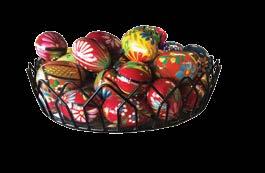



Logging with heavy equipment like skid steers can rut and gouge the forest floor. Evidence of these ruts, not unlike the pits and mounds created by uprooted trees, can last a thousand years. It is possible to date a logging event by estimating the age of the oldest trees growing on or in the ruts. That date can then be checked against healed wounds on hemlock trees growing adjacent to the ruts. However, if selective logging is done with more care and skid steers are operated on frozen soils, the roads and paths will not be as evident.
The forest and the land is constantly recording what happens in the environment. In this article I’ve laid out a few of the techniques I use to determine what happened in the past based on how things appear in the present, but there are other methods that can be employed to tease out the history of a given place. The tree makeup of a forest – the mix of species growing within it and their respective ages – can assist us in understanding when and in what conditions they got their start. Indeed, there is much to be gleaned from tree diversity or the lack of it. I will touch on this subject again in a future article. The next time you find yourself in a forest or field, see if you can learn anything about the past from a myriad of clues left on the land and in the trees. •









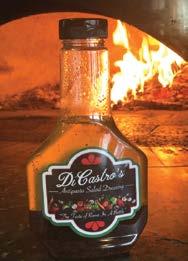











































































































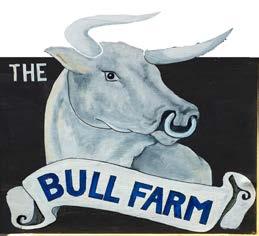




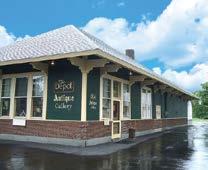
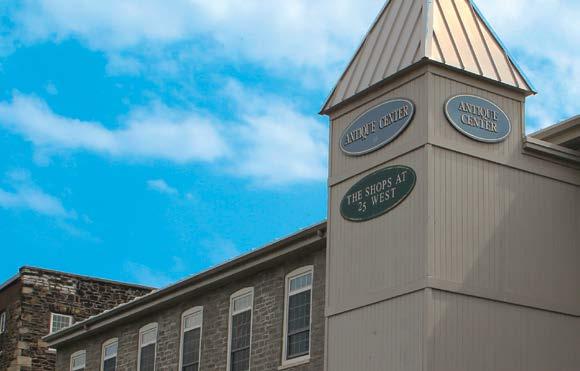


























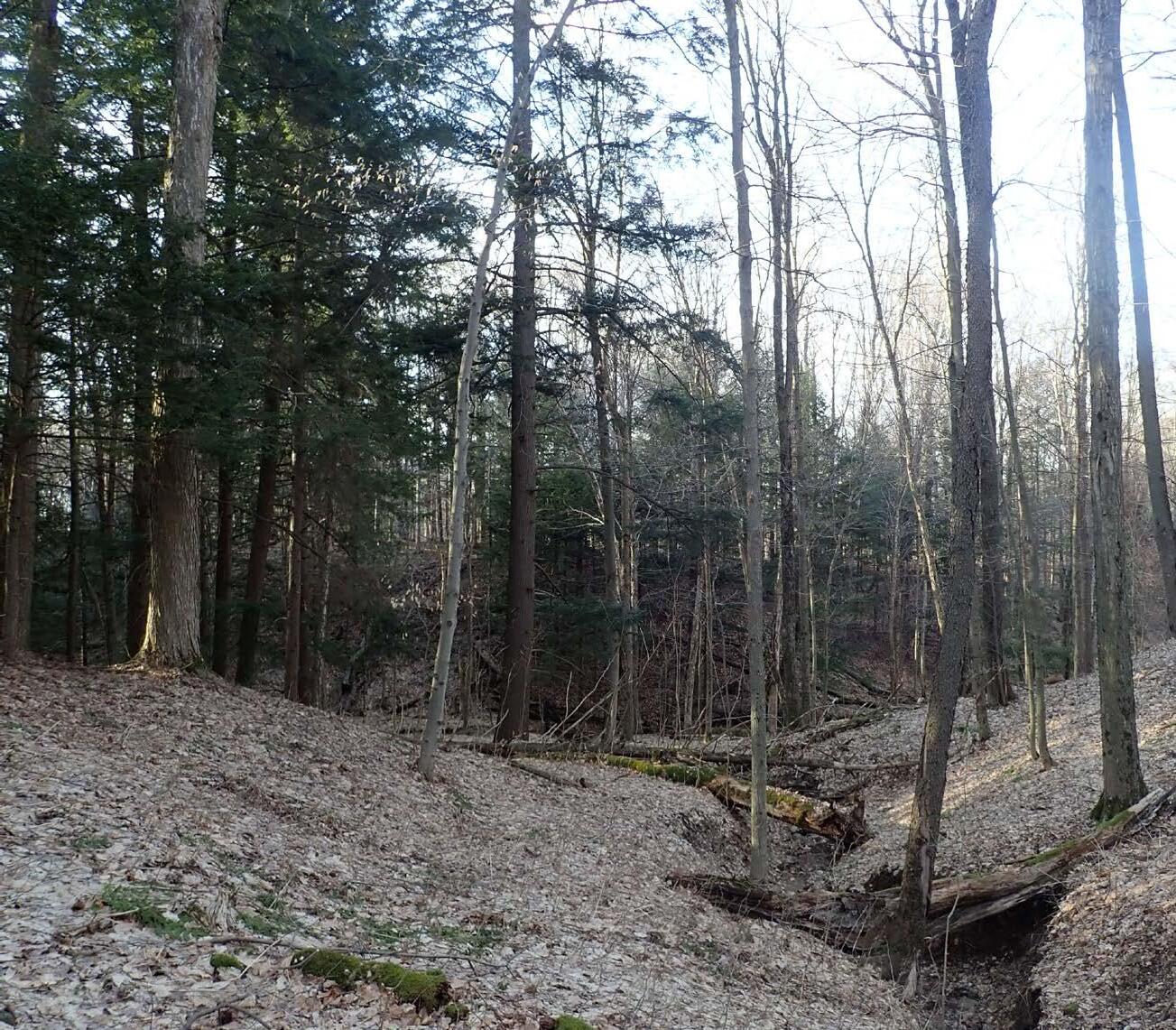
March is the time of year when spring migration for birds gets underway. This is true despite dramatic weather oscillations that typically occur. March weather can be like the dead of winter on one day and warm and spring-like on the next. Our earliest arriving birds are almost guaranteed to experience migratory remorse when the inevitable happens, and snow and ice prevent them from foraging for food. Of course, with a few notable exceptions, most early migrants are seed and berry eaters and not strict insectivores. Wisely, the vast majority of insectivores will delay their return to the region until late April and May, thus ensuring the availability of insects.
One might wonder why so many bird species risk their lives by returning north so early. Like salmon, driven to make death defying journeys upstream to spawn, the birds are obeying their own primal urges to get to their breeding territories as soon as possible. With luck, they will arrive there ahead of their competitors. Essentially, each species is in a race with its own kind to secure breeding territories. Those first to arrive get an option on the choicest territories. Of course, they may still have to fight to hold them, but precedence gives them an advantage over their rivals. If this wasn’t true, and early arrival was not advantageous, it’s unlikely this behavior would have evolved. With Red-winged Blackbirds, male-only flocks are first to arrive at migra-
tory stopover locations, and then subsequently at their breeding grounds. Flocks of females as well as juvenile, non-breeding males migrate later.
As ponds and other wetland areas begin to lose their ice, waterfowl start showing up in droves. At our nature preserve, we are always happy to see our resident Canada Geese return as well as our resident Wood Ducks. The male Wood Duck is one of the most strikingly beautiful native birds in the Northeast, and seeing them in their finest breeding plumage is always a treat. Like the Red-winged Blackbirds, the Wood Ducks return with breeding on their minds, and they spend most of their time performing courtship rituals, whistling, and chasing after each other. The female’s call is more of a wail than a whistle, but they are every bit as vocal as the males. Although male Wood Ducks can get a little on the rowdy side, they don’t come close to the aggressive antics of the Mallard drakes. Sometimes male Mallards act like rowdy hooligans – instigating fights with each other, and mercilessly pursuing females. The loud quacking calls of hen Mallards trying to get away from bands of randy males becomes the soundtrack of the beaver ponds in March.

Last March, I was treated to the sight of a small flock of Tundra Swans flying over the Beaver ponds. As their name suggests, Tundra Swans breed in the far north on the arctic tundra and our only chance to see them is during migration. Although we’ve never documented them at our preserve before, they are not especially rare and predictably occur in the region. Oneida Lake, Lake Ontario, and the Montezuma National Wildlife Refuge are regular migratory stopover locations for Tundra Swans.
The first Killdeer to return to the region often arrives in early March. This doesn’t tend to be a problem if there is little snow on the ground and the streams and wetlands aren’t entirely frozen. The Killdeer relies on hunting insects and other invertebrates to survive. If snow and ice prevent them from foraging, they must return south, or go east perhaps as far as the Atlantic Coast to find sustenance. Fortunately, this member of the plover family is a strong flier, and if they have sufficient energy reserves, they can make a quick passage to an alternate destination. The American
Woodcock is another shorebird type that often makes the questionable decision to return to their breeding grounds in March. Although the species’ extremely long bill makes them better suited to penetrate snow cover and obtain their invertebrate food than the Killdeer, they can still get into trouble. When faced with a habitat inundated with deep snow, they, too, are forced to backtrack on their migration journey. However, if the conditions are more favorable, the ground is not frozen, and they can eke out a living, the Woodcock will start right in on courtship behavior.










As the snow melts away in the woods, the first of the spring ephemeral wildflowers begin to emerge from the soil. As you listen to the calls of returning flocks of geese and as local crow families begin flying over with nesting materials, it’s time to start splitting your attention between what’s taking place in the sky with what’s alive on the ground. There will be more on what’s happening on the forest floor in next month’s nature article. Until then, be attuned to the fits and starts of nature’s spring awakening and give welcome to the returning birds of March. •




















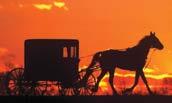


This month, we wrap up a three-part series about humans in space. We’ve reviewed six decades of efforts by NASA and other space agencies that pioneered human space travel, landed 12 people on the Moon’s surface, and built the International Space Station (ISS) where astronauts routinely live and work for six months. So, what’s next? Work is underway to expand the fleet of orbital stations, and most exciting of all, the next phase of NASA’s Artemis program returns astronauts to the Moon!
New ISS crew members will continue to arrive this year in SpaceX Crew Dragon and Russian Soyuz spacecraft. But in April, crew transportation options increase when Boeing’s CST-100 Starliner spacecraft launches on a one-week mission to the station, carrying veteran astronauts Sunita Williams and Barry Wilmore for Boeing’s first Crew Flight Test. Once Starliner successfully passes the post-flight evaluation, NASA will add Starliner to the ISS crew launch schedule later this year. One of the astronauts on that flight will be aerospace engineer Dr. Jeanette Epps, born and raised in Syracuse, NY!
Plans call for sustained use and support of ISS until at least 2030. NASA and its partners recognize the station is aging and are working on plans to decommission and eventually send it on a path to safely burn up in the atmosphere. To

ensure U.S. astronauts have access to the unique microgravity environment for research once ISS is retired, NASA created the Commercial Low-Earth Orbit (LEO) Destinations project to encourage private companies to develop, support and own commercial space stations. In this arrangement, NASA and its astronauts are customers, freeing the agency of LEO station development and support costs so it can concentrate on other missions and the Artemis program. So far, four companies are working on proposals: Axiom Space, Blue Origin, NanoRacks and Northrop Grumman.
Beyond Earth, the Artemis program is making great progress. Artemis 1 launched November 16, 2022 from Kennedy Space Center, sending the uncrewed Orion spacecraft on a crucial 25-day test to orbit the Moon. Orion splashed down in the Pacific Ocean on December 11. Mission data evaluation continues, and so far it appears the massive Space Launch System (SLS) rocket, Orion, and ground and recovery systems worked very well and even exceeded many goals.
Next up is Artemis 2, scheduled to launch Orion with four astronauts onboard in May 2024 – the first crew to orbit the Moon since Apollo 17 in 1972. The 10-day, full systems test will break records, flying a trajectory 4,600 miles beyond our nearest neighbor. NASA
plans to announce the crew members this Spring. The mission sets the stage for the much anticipated next step.


Artemis 3 will land the first woman and person of color on the Moon near the South Pole! Planned for 2025, the complex mission launches four astronauts in an Orion spacecraft. Once in lunar orbit, Orion docks with a SpaceX Starship lander. Two astronauts enter Starship and are transported to the surface. After several expeditions, Starship will liftoff and dock with Orion. After transferring the crew and surface samples, Orion and its precious crew will return to Earth.
NASA is also working with private industry and international partners to build a lunar orbiting space station called Gateway. It will serve as a cargo depot and staging area for future missions and a habitat for crews. Construction of several of the modules is in progress, and launch planning continues.

We certainly live in an exciting human spaceflight era. Artemis is a precursor to future efforts to someday send astronauts to Mars. Visit the www.NASA.gov website for more information.
Wishing you clear skies! •
Hanny’s Voorwerp. Image Credit: NASA, ESA, W. Keel, Galaxy Zoo TeamIf there is one thing Mohawk Valley Girl (um, that’s me) loves, it is an eclectic, artsy boutique. I recently discovered a new one in Cherry Valley: The Pink Squirrel.

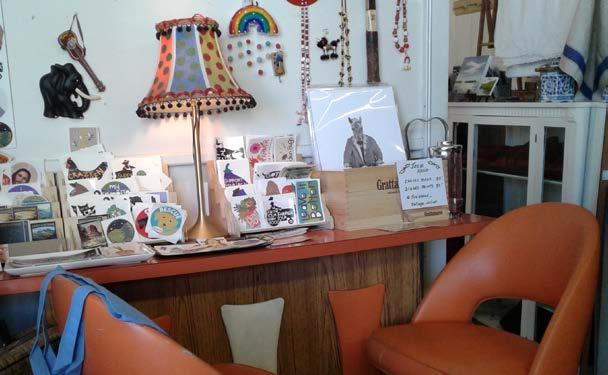
I happened upon it quite by accident when I unexpectedly found myself in Cherry Valley (long story, not very interesting). I saw that it was open and went in. What a treat was in store for me! I cannot possibly list all the beautiful and interesting things you can find in this shop: vintage items, works by local artists, unique clothing, stickers, notecards, even a few food items (including candy!). As soon as I walked in the door, I knew it was a place I would like to make a regular stop.
The store occupies two rooms in one of those old main street storefronts which one can still find in small town New York state, with big windows letting in lots of sun and beautiful woodwork throughout. Owner Elizabeth Graham told me that one of the rooms had previously housed the Lincoln Lounge, which sold vinyl records. This was after Nancy Erway, an avid Elvis fan, had a café in there. Some 30 years ago, she installed a 1970s bright yellow Lincoln Continental, which is still there. Also remaining is part of an orange bar.
I had a wonderful time looking around and chatting with Elizabeth.
“I love vintage, but I mix it with natural fiber clothing,” she said. I especially admired the socks, some made with alpaca wool.
Elizabeth is also a great supporter of local artists and artisans.


“If I like it, I buy it,” she said. “People bring me things and say, ‘I make this, are you interested?’ “
I loved a wall full of metal ornaments made from scrap. Reduce, reuse, recycle! Other items for sale include jellies, cookies and breads from Brimstone Bakery in Sharon Springs, and a shelf full of classic children’s books.

“The Snowy Day!” I exclaimed. “I remember that book!” It was actually my younger sister’s book; I am older than I look!
Also available for children are fun toys suck as tops and finger puppets. I love finger puppets!
I spent some time admiring postcards and note cards, being a great aficionado of snail mail and the so-called lost art of letter writing (I don’t say my letters are works of art, but I do write them). I purchased one with a cute barnyard scene that I am sure one of my correspondents will get a kick out of. Elizabeth also makes handmade post card using antique ephemera. •

Since COVID restrictions were lifted, there has been quite a buzz about all of the new restaurants in our area. Mariam Mediterranean Cuisine is one of those new establishments most frequently mentioned by those who love a gourmet adventure. The building, previously occupied by Bev’s Place diner, pleases customers with a clean, relaxed atmosphere and makes for a perfect setting to enjoy wholesome food at reasonable prices.
It is owned and operated by Karam Wassel and his wife Kaother Nono. Mr. and Mrs. Wassel and their daughter Maria came to America from Syria in 2015 for a better life. They chose Central New York because Mr. Wassel’s brother lives here.



It was their zeal for cooking and feeding people that guided their decision to open a restaurant. They named it Mariam in honor of Mr. Wassel’s mother, who influenced their passion for preparing food with vibrant flavors.


Upon entering this charmingly simplistic space, guests are immediately welcomed with genuine smiles. As Mrs. Wassel greets customers, she directs them to a table decorated with a small Kalanchoe plant and politely asks if they would like beer, wine, or soda.
Daily specials are written on a chalkboard. Today’s special is kafta: spiced ground lamb served with sliced tomatoes, potatoes, and rice. The dish is garnished with fresh




parsley that fashions a lovely presentation.

Relaxing at an intimate table are Rev. Magead Salloum, and his wife Rev. Beverly Salloum.


“We love this restaurant! We came here tonight to celebrate my husband’s birthday,” said Rev. Beverly Salloum.






“Tonight we’re having fish fries, Rev. Magead Salloum adds, “but my favorite dish is the mazza platter (sampler). It has grape leaves stuffed with rice and meat. Try them, they’re fantastic!”



The mazza platter also includes: hummus dip; baba ganoush dip; spinach pie; falafel patties; tahini sauce; tzatziki sauce; and pita bread. Paprika sprinkles, parsley, lemon, olives and whole chickpeas dot the pool of olive oil centering its hummus dollop. How Mr. and Mrs. Wassel ornament every dish reflects the pride they take in their craft. It’s clearly a labor of love.
As customers intermittently come in to pick up their take-out orders, they exchange familiar pleasantries with other patrons.










Ross Wittenburg, who occupies one of the diner stools, appears very comfortable dining alone in this homelike eating place.

“The spices in the chicken shawarma are the best I’ve ever had,” he said.
A kids’ menu is available with both Mediterranean and non-Mediterranean options. A vegetarian platter is available for those who wish to abstain from meat. One can satisfy their sweet tooth with baklava, rice pudding, namourah, kataif, or ice cream. Turkish coffee is a popular ending to this dining experience. It is served in a small porcelain cup called a ‘kahve fincani’.
At Mariam, there’s an obvious exchange of optimism between proprietor and consumer. With sincerity, Rev. Beverly Salloum says of the Wassels, “They’re wonderful people!” •









Answers found in the pages of this magazine! Solution will appear in next month’s issue
Across
2. Started in 1976, it was one of the first sculpturespecific artist residencies in the world. (2 words)
9. Our new writer, Maryann, visits this new Mediterranean restaurant in Whitesboro.


10. Brighten up your home or business with custom decorating by Added Touch ____. See page 24.

11. These are expensive at grocery stores (but still a bargain at your local farm).

13. A squirrel of a different color-- name of a new boutique in Cherry Valley.
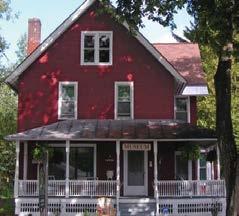

14. Peas are one of the earliest crops to ____ in spring.
16. The name of Boeing’s new spacecraft that launches next month.

Down
1. Peggy teaches this popular 1970s craft in a work shop this month
3. Mind your Ps and Qs. What the ‘P’ might stand for, thank Q very much.
4. This blackbird is one of the earliest birds to return in the spring.
5. You will see steam rising this time of year from sugar ____.
6. Pre-order your traditional St. Joseph’s Day (March 19th) lunch from this pastry shop in East Utica.
7. Adirond-X? These superheroes are just some of the comic champions who have visited the ADKs.
8. These denizens of the forest can teach us about history.

12. Mark your calendars for the Kirkland Art Center’s Annual Spring ____ April 29th!
15. Clinton, NY is this many miles from Utica, and there’s a marker in the village proclaiming such.
MVL Crossword Puzzler: This local crop has a higher antioxidant value than brocolli and tomatoes. (2 words)
Unscramble the letters in the yellow boxes then email your answer to: mohawkvalleyliving@hotmail.com by the 18th of this month. You’ll be entered to win an MVL Mug and a bag of delicious, fresh-roasted FoJo Beans coffee! Answer and winner to last month’s puzzle on page 46.



 by Cassandra Miller
by Cassandra Miller


Kaitlin Santoro picks up her mother’s hand from a shelf. The glass-like isomalt sugar cast is one of the items she brought to her two-month artist residency in the winter 2023 cohort at Sculpture Space. An artist and college instructor who splits her time between Philadelphia and New York City, she arrived in Utica in early February with three other visiting artists eager to embrace the quiet of the Central New York winter and practice their art.
Sculpture Space started in 1976 as one of the first sculpture-specific artist residencies in the world and has hosted more than 635 artists from 35 different countries. The art space is in an old factory that sits an empty lot back from Gates Street in sight of the F.X. Matt Brewery. The building is topped with large orange letters spelling “Sculpture Space,” and its grounds are dot ted with large-scale artworks. Some of the sculptures created here can be seen at the Griffiss Sculpture Park in Rome, which was founded through a part nership with Sculpture Space, a nonprofit that operates with support from grant funding and individual donations. Its September CHAIRity Auction is a major so cial event each year and a big fund

raiser for the organization.





Normally, the studios at Sculpture Space are closed to the public, but four times a year they are open for receptions at the end of each of the seasonal two-month residencies. The first winter residency open studio reception is Wednesday, March 15, from 5 to 7pm, when visitors can hear from and see works by Kaitlin Santoro (Philadelphia/New York City), Karla Rivera (Canada), Benjamin Heller (New York City), and Cedric Tai (California).



Kaitlin and Karla were working in the space one afternoon in early February. They had been in town less than two weeks and had already celebrated two birthdays of their cohort of four, all of whom live together in a house a block away. A yellow shark piñata still hung from the ceiling in the center of the space. “I have great studio mates,” said Karla.
Originally from Mexico City and now living outside of Toronto, Karla applied to the Sculpture Space winter residency because she said her work creating functional ceramic pieces is slow this time of year. The round-the-clock access to the space was also appealing to her.

“Having 24-hour access helps a lot. I have tons of ideas, and if you have an idea in the middle of the night, you can just come over and try it out,” she said.



A metal frame prototype of an anatomical heart sits on a desk by the window in her studio. She is experimenting with metalwork while she’s in Utica. Studio Manager George Hendrickson has been showing her how to use the metalworking equipment and sharing his specialized knowledge.

Kaitlin is also experimenting with techniques during her residency. Her work often illustrates the fragility of memory over time. The hand in her simple studio at Sculpture Space was one of three in a 2021 work, “Hereditary,” which included isomalt sugar castings of her grandmother’s hand, her mother’s, and her own, installed oldest above to youngest on the bottom. Water drips from above, slowly eroding the oldest hand before dripping to the hands below.
While in Utica, she is working on a doorway made of ice (if it gets cold enough) that viewers can walk through to explore the cognitive effect of those with dementia who are sometimes triggered by doorways, like her grandma.
“I’m excited to be here because they seem to embrace the nontraditional,” Kaitlin said.



Visitors can see the evolution of artists’ works on March 15th, as well as at open studios during the three other residencies this year: May 15 (Spring Cohort), August 16 (Summer Cohort), and November 15 (Fall Cohort). •






Self-taught







March 10 – March 30, 2023

Reception: Fri., March 10, 3-5pm

Dehmlow collects chance scenes of what resonates with her in aged dwelling spaces and makes pots as configurations of layers, like paintings.
PrattMWP Gallery at MWPAI
310 Genesee Street, Utica, NY (315) 797-0000 mwpai.org
Elemental:ArchivalInkjetPrints

March 10 – April 1, 2023
Opening: Fri., March 10, 5-7pm
Curated by Sandra Stephens and featuring the works of Erika Jaeggli, Allie Tyre and Jeanne Proust.
The Other Side
2011 Genesee St., Utica, NY www.theothersideutica.org
Hours: Thurs: 12-3pm, Sat: 12-3pm or by appointment




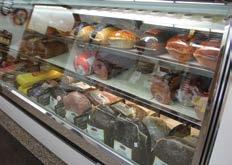

Three Exhibits
Through March 26, 2023

Flowers,TreesandRoots:


Wild World of Plants
This exhibit explores all manner of rendering plants: their habitats; their shape, form, color and uses; their symbolism in religion; their medicinal properties; and more.
TheArt&ScienceofBotanical Illustration
Juried exhibit of botanical art


Precaria:Disturbanceand Dislocation,SculpturalWorksby JackElliott

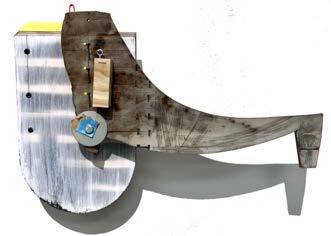
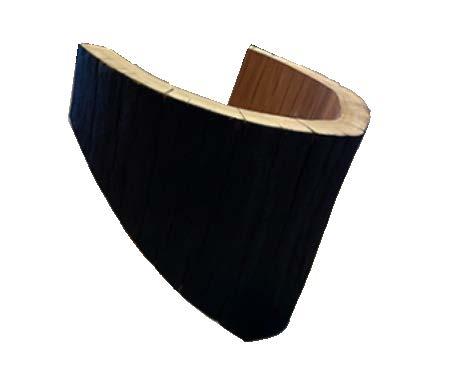
Work that express relations between trees, people, and our shared environment.

View 3273 Rt. 28, Old Forge, NY (315) 369-6411 viewarts.org





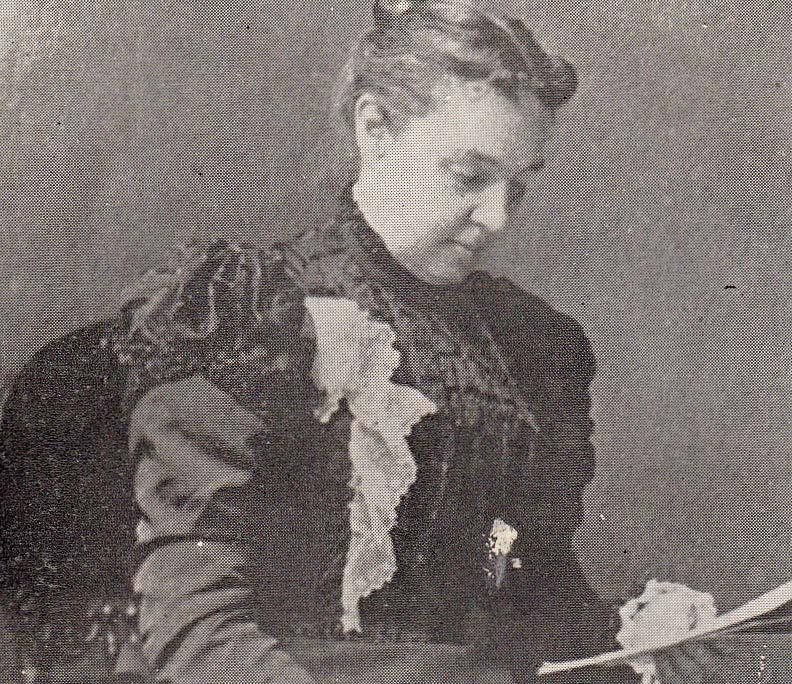
 By: Lou Parrotta,
By: Lou Parrotta,




Born into a family with deep roots in New York, Blandina Dudley Miller entered this world on May 1, 1843, and was one of ten children to her parents, Rutger Bleecker and Mary Seymour Miller. Blandina’s paternal grandfather, Judge Morris S. Miller, once was private secretary to New York’s second governor and the first Chief Justice of the US Supreme Court, founding father John Jay. Judge Miller came to Utica in 1808 and married Maria Bleecker of Albany. His political involvement included serving as president of the village of Utica, Oneida County’s first judge, and US congressman.
Rutger Miller followed his father’s path serving in the New York State Assembly and working as a clerk of the US District Court. He was also instrumental in the building of the Utica-Schenectady Railroad. His wife, Mary, was the sister of Horatio Seymour, who served as mayor of Utica, governor of New York twice, and was the Democratic nominee for president in 1868, losing to Ulysses S. Grant. In addition, Rutger built the Miller Mansion on Rutger Street, which served as the residence of future US Senator Roscoe Conkling, where it played host to numerous dignitaries visiting the city.

Blandina spent some of her youth in Alder Creek, where she received private tutoring. In the winters, her education


continued in Utica at Turner’s French School. Afterward, she attended Moravian Seminary in Bethlehem, Pennsylvania, graduating at the top of her class. She studied German, history, and music at the seminary.





Blandina returned to Utica in 1861 and took an active interest in Grace Church. She sang in the church’s choir and taught Sunday school. Blandina then proceeded to study the area’s history and write about it. Her most-noted work, A Sketch of Old Utica, is a wonderful volume about the early days of the city. She also wrote other articles, including one about her famous Uncle Horatio.

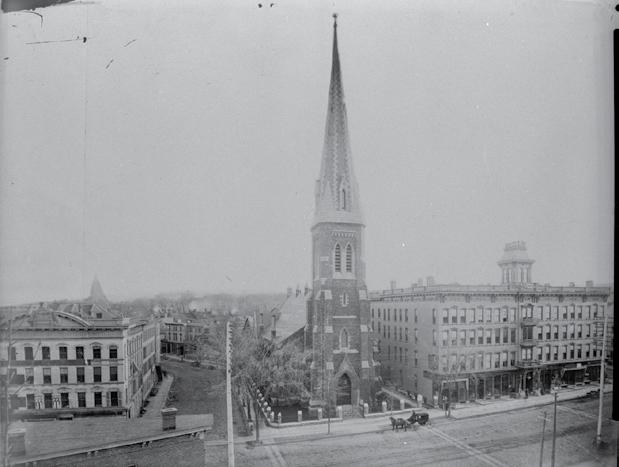
An active member of the then Oneida Historical Society, where her uncle served as the organization’s first president, it was said about Blandina upon her death, “no one had done for (the society) more valuable historical work (than her).” She was also a dedicated patron of the Utica Public Library, held a membership in the Colonial Dames and Daughters of New England, and was a member of the Daughters of the American Revolution, where she once served as a Regent and as the historian.

When Blandina passed away on Saturday, January 6, 1912, she succumbed after six years of illness and after having lain in a coma for days in her apartment at the Obilston Apartments on Genesee Street. Her funeral took place in her beloved Grace Church under the spiritual direction of Reverend Octavius Applegate on January 9, and her burial was at Forest Hill. Her obituary rightly stated that Blandina Dudley Miller was an “accomplished woman of this city.” •


The Adirondacks has proven fertile ground inspiring creatives for decades.


Presently, I have well over one hundred children’s and young adult books set in the region, several dating back to the late 1800s.





So many of the characters my peers and I grew up reading have had adventures here including, The Hardy Boys, Tom Swift and Nancy Drew. Early on, when my son, Justin, and I began writing our own series of chapter book set in the Adirondacks, we discovered the Boxcar Children (who we dubbed, The Refrigerator Kids, for all the times they stopped somewhere in the middle of story for a bite to eat) also had an adventure in the Park.
Having been a comic collector in my younger days, it was also fun to discover classic superheroes have also haunted these mountains.

In April of 1969, (back when comics were only 12 cents!), the Adirondacks get a shout-out in The Amazing Spiderman #71.

In issue #145 of The Uncanny X-Men (1981) an imposing castle originally built by the menacing Dr. Doom was featured that had been converted into an Amusement Park situated on the summit of an Adirondack peak!
Following that 3-issue saga, the X-men found themselves once again in the Adirondacks in April 1987 for yet

another short adventure, just three months before the Thunderbolts arrived in issue #4, their Thunder Jet soaring over the Adirondack wilderness area where we see them on page one zeroing in on that popular castle of Dr. Doom.


Inspired by the number and combination of regional, famous and nationally award-winning authors who have penned books set within the Adirondacks’ Blue Line for young readers, I am also (slowly!) working on a non-fiction book to highlight this rich regional literary history.






Because I read to Justin almost every day of life until he was around 12, he also grew up exposed to many of the same characters and stories that I did which had a great influence on the kinds of stories we wanted to tell. And because our home away from home is the Adirondacks, it was natural to combine both sources of inspiration to weave our tales.
For those who have access to public television, Justin and I will be sharing some of the story behind our stories Tuesday, March 14th at 7:30 p.m. on a new show, WPBS-TV Weekly: Inside the Stories, hosted by Joleene DesRosiers. •

 by Peggy Spencer Behrendt
by Peggy Spencer Behrendt
In 1974, Tim and Peggy Spencer Behrendt set off on an adventure. They began a new life in the woods of Cold Brook, NY, without modern conveniences like electricity or indoor plumbing. These are excerpts and reflections from Peggy’s journal chronicling their adventures and also her childhood memories growing up in Westmoreland.



I put on my cross-country skis and head out to get some fresh air, exercise, and enjoy winter with Sue Hill Tittler in our Preserve. We head down the old section of Shawangunk Road and pick up the well-marked trail that runs along the edge of Black Creek. I know that deer and other wildlife use this trail and I wouldn’t be surprised if Indigenous ancestors may have also used it. I imagine that I’m a character in a North Country adventure story by James Fenimore Cooper - an explorer looking for an easy way to cross the creek, a Native American searching for winter-hardy herbs, a mountain hermit returning from town, or maybe a homesteader looking for firewood. When I see a likely little shelter under the roots of a tree, I think that it would be a comfy place to sit during a storm if I were a bunny.

It’s good to have someone with me because, like swimming, it’s safer to have a companion in case of a mishap. We comment about what we are seeing and experiencing along our excursion, and it enhances the immersive pleasure of the trail.



Our skis slide quietly through virgin snow. It undulates in pure white mounds and dips.

Today, it’s perfect for skiing with soft fluff over crunchy accumulations.
Black Creek is not frozen or filled with slush but re flects a brilliant arctic blue from the sky with dancing crystals in the mirror images of snow-mantled trees and bushes along its shores.
We notice a distinctively muddy otter trail creating a lit tle slippery slide flowing down a steep bank to the creek. When our trail swerves deeper into the woods, there are porcupine tracks that invariably end at the base of a tree. I look up to see if there might be one parked high in its branches having a winter nap. As the trail meanders close to Black Creek again, we come across what must be a beaver trail. Around the paw prints is a rather wide swath in the snow on either side caused by the dragging of their paddle-shaped tails.
Many dainty footprints of squirrels and mice disappear at the base of a tree. Sometimes we see the chicken-like tracks of a ruffed grouse. If we’re lucky, we
even see an imprint of what looks like angel wings created by a bird, perhaps a partridge or crow that has recently taken off, after having possibly caught an unwary mouse.



I attempt to go straight down a small, slightly steep slope and am surprised to suddenly find myself tilting out of control and landing hard on hidden ice at the bottom of the hill! Like a newborn colt on gangly legs, I gingerly maneuver awkward lengths of skis, legs, and ski poles to rise, hoping I’m not seriously damaged, but all is well. I’m feeling grateful now for the stretching, sit-ups, leg lifts, and push-ups I diligently (albeit reluctantly) do
most days as it keeps me agile and mobile.








Snowshoes would be better footwear for navigating this trail of forest mounds and dips, but I love the feeling of gliding on skis. After about two miles of exquisite woodland scenery, we return pinkcheeked, refreshed, and pleasantly tired.

Still, winter often pins us inside too long, and our spirits flag because we miss the sepia shades of earth un-mantled by snow. We crave the succulence of plants bursting with chlorophyll and throbbing with veins filled with sap. In March, we eagerly await the first patch of bare ground, which often occurs on the south side of a pine tree where accumulations of tawny pine needles may be dry enough to sit on with our faces to the sun. Fresh, pine-scented air wafts about, and the cheery music of chickadees, pine siskins, and purple finches entertain. Sometimes we’ll tap a maple tree to see if it has begun to flow and to taste the indiscernible sweetness of maple flavor, a “spring tonic.” Since this sap is supplying nutrients that facilitate the growth of huge, strong trees, (and we share 50% of our DNA with trees, according to reliable scientific sources), it makes sense that

it might be beneficial to us as well.
It’s very difficult to predict the flow of maple sap, even from one day to the next as it is so dependent on weather conditions. Last year, because of this, we missed the special weekend events at the maple syrup farms in the Mohawk Valley but near the end of the season, we were able to get to the McComb’s Family Oak Hill Farm in Speculator. Family members from far away come to spend the sugaring off-season, helping with the harvest and processing. They are fortunate to have many beautiful acres of maple-abundant forest on slopes that give them the advantage of labor-saving, gravity-fed pipes from the trees to the sugaring-off shed. We admired their stainless-steel tanks and equipment and got a friendly reception with interesting
facts on the process, some great recipes, and a succulent sample of maple syrup, hot out of the boiling tank.
Of course, a visit to Specu lator is not complete without a pause by the semi-frozen lake where geese appear to be walk ing on water or to the shops filled with Adirondack-themed items. The books on local history in the General Store always interest me, and Tim can’t resist any representational form of a bear, so it’s not unusual for us to come home with one.

Trying new things can be fun. This year, we went ice skating with family members at the Clinton Arena. I was hesitant since it’s been probably at least 60 years since we’ve had skates on and didn’t relish risking an injury from falling. I was comforted though when we met a female skater there who was older than I. She obviously loved the sport and was able to do it skillfully. Also, the Arena has a device like a walker that novices can lean on and push along to keep themselves upright. This was a great help and comfort until muscle memory and confidence returned.
There was a very interesting exhibit on the history of ice skating at the James Fenimore Cooper Museum in Cooperstown one year. The

Be a part of a 60+ year arts organization dedicated to serving Central New York through arts-oriented programming — including exhibitions in our gallery,classes for children and adults, an annual artist residency program, and an award-winning concert series.
Executive Director, Full-time


The Executive Director is the public face and administrative leader of the Kirkland Art Center (KAC) and is responsible for overseeing the programming, operations, and finances of the Kirkland Art Center.

Program Manager, Part-time

The Kirkland Art Center is looking for an energetic, experienced, and enthusiastic Program Manager to join our team of dedicated art supporters.
first skates were likely animal bones with straps laced through holes drilled through them to attach them to one’s feet. There is evidence that 5,000 years ago they were used by Finns in the Lakeland area to facilitate winter travel over frozen lakes so that minimal energy was required. Fortunately, we now have sharp metal blades that glide like silk over the ice, giving almost a sense of flight, and they may be rented at the Arena. I did fall once, while trying to skate without assistance, and decided that knee, elbow, and wrist pads (and maybe a helmet) would be wise to use in future visits. It was lots of fun, and we’ll go
9 ½ East Park Row PO Box 213 Clinton, NY 13323

If you are interested in learning more about these positions, please email Damhnait McHugh (Board President) at info@kacny.org or contact a Board member. To apply, please send resumé, cover letter, and list of references to info@kacny.org
The KAC is a non-profit organization, and only through your donations are we able to provide the high-quality programming that we are known for. As we rebuild and reopen our programs, we need your financial contribution more than ever.
new sights. We are so fortunate to live in an area rich in opportunities, variety, and beauty and to be able to get out to enjoy them. But sometimes weather or infirmities make it impossible to get out and about. What is there to look forward to then? We learned a valuable lesson from one of Tim’s parishioners, Verna Carncross, on a pastoral visit to her home when she could no longer go out on her own. She’d had a very active life raising a family,
supporting her church, and being an integral force in starting the first Planned Parenthood clinic in Utica in the 1970s.

“What do you do now that you are housebound?” Tim asked her, knowing she didn’t mind getting right to the point. “Every day, I know something special is going to happen and I look forward to it,” she replied. “Such as…?” Tim inquired. “It might be a phone call or a visit from a friend, finding an interesting book to read, or simply a particular bird appearing at my bird feeder,” she replied with a smile. Her optimism and ability to find pleasure in small, daily occurrences helped keep her spirits up and her joy of living fulfilled. May we all do likewise, whatever our circum-
The Shawangunk Nature Preserve is a deep ecology, forever wild, 501©(3), learning and cultural center. Tim and Peggy still live there and can be contacted through their website.
www.shawangunknaturepreserve.com


March 18, 2023 Workshop at the Shawangunk Nature Preserve
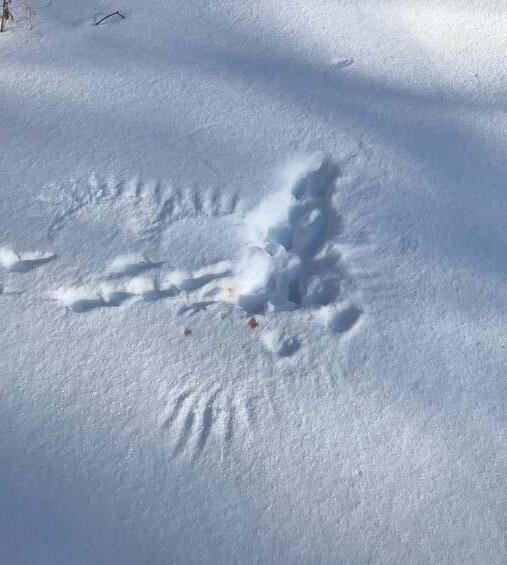
10:30am-1:30pm
MACRAME PLANT HANGER

Learn basic macrame knots and make an elegant but simple plant hanger out of cotton cord. We’ll meet at 217 Shawangunk Rd. and will have some tomato soup and grilled cheese sandwich ($8) available if desired or bring your own lunch.
The materials fee for the macrame project is $6. Please register by March 11, although there might be space for later registration. Call 315 826 7405.
“Tales from Shawangunk” Book 3 is now available for a $15 donation to SNP at Peter’s Cornucopia, The Sunflower, Little Falls Community Co-Op, and Shawangunk Nature Preserve. It also may be borrowed through Mid-York Library from the Poland Library.



 The wings of a bird imprinted in snow.
The wings of a bird imprinted in snow.
One of the very first signs of spring in the Mohawk Valley is the appearance of maple syrup buckets hanging from the sides of sugar maples. Maple syrup was first introduced to Europeans by the indigenous peoples of North America. The full moon in March was celebrated by the Iroquois as the first sign of spring—inviting the robins to return and the maple sap to flow.
















Cook’s Maple Syrup
Open daily 9am-6pm
Free samples! Maple cookies, popcorn, cotton candy, and syrup!
Bourbon barrel aged syrup, BBQ sauce, maple mustard, maple vinegar!
247 County Rd 20, Sherburne (607) 674-9593 • www.cooksmaple.com
The Farmers’ Museum
Sugaring Off Sundays, March 12, 19, & 26: 8:30am-2pm
5775 State Highway 80, Cooperstown (607) 547-1450 • www.farmersmuseum.org
Heartwood Maple
Maple products and maple syrup equipment for maple enthusiasts 8072 State Hwy 12, Sherburne (607) 674-2500 • www.heartwoodmaple.com
Ingles Maple Products
Maple products avalable.
382 State Highway 28, Richfield Springs (315) 858-0368 • www.inglesmapleproducts.com
Lincoln Davies
Tree Tapping and sap collection supplies.

8689 Summit Road, Sauquoit (315) 839-5740 • www.lincolndavies.com
Millers Mills Maple
Maple products avalable.
955 Richfield Hill Road, Richfield Springs
Please call ahead: (315) 858-2855
Discover the pure taste of maple!
Vernon-Verona-Sherrill High School 5275 State Route 31, Verona
V.V.S. FFA
Maple Weekend 2023


Saturday & Sunday, March 25 & 26
“Local annual event to support the VVS FFA Program”
Schedule of Daily Activities: 8am–12pm- Pancake Breakfast with Real VVS FFA Maple Syrup served in the VVS High School Gym

Adults: $ 12, Senior Citizens and children under 12: $10, Pre-schoolers: free
Daily Pancake Art!
Gluten-free Options Available
Free Wagon rides to the Maple Sugarbush & VVS FFA Sap House 9am-1pm

Sunday, March 26th only: 11am- Official 2023

Maple Tree Tapping Ceremony

Interact Club and VVS Community Rotary Can & Bottle Drive - each day 9am to 12pm
All Maple Syrup and Maple products will be available! VVS School Store products also available!
Questions, please direct to jferreira@vvsschools.org or call 315-829-2520
Single-source producer of maple syrup, maple sugar, maple crumbles, and maple dog treats. 101 Dow Road, Cold Brook (973) 214-2872
www.ourwoodsmaple.com

Root Farm
Maple syrup tapped from our own trees
Call: (315) 520-7046, ext. 226
2860 King Road, Sauquoit
www.rootfarm.org
Shaw’s Maple Products
Open Maple Weekends 10am-4pm. Enjoy a tour of our sugar house, try some delicious maple samples and stop & shop on the way out! Tour provides a full explanation of the maple farming process. Available at local farmer’s markets, festivals, and many retail locations.


7945 Maxwell Road Clinton (315) 853-7798
www.shawsmapleproducts.com
Welcome to Pancakes in the Sap House with fresh maple syrup on Saturdays and Sundays from 8am-1pm February through April. Try our maple coffee, maple milk, butter, and maple syrup. 305 Lynk Road, Sharon Springs • (518) 284-2476

www.thesaphouseatstonehousefarm.com
Tibbitts Maple


Open Maple Weekends 10am-4pm. Our maple sugar cookies are always a big hit! Sample and shop pure maple products, like maple BBQ and hot sauces.
8874 Tibbitts Road, New Hartford (315) 793-3114
www.tibbittsmaple.wordpress.com
V.V.S. FFA Maple Market
Open Maple Weekends 7:30am-12pm. Free maple saphouse tours. All types of maple products will be sold including cotton candy, syrup, sugar, coffee and mustard.



5275 State Route 31, Verona (315) 829-2520

Unless you’ve been trapped under a massive rock these past few months, you have undoubtedly noticed that egg prices in the grocery store are through the roof. And since eggs are an ingredient found in so many other foods, the high price of the friendly ovum has caused grocery and restaurant prices to go up across the board—unhelpful in these times of increased inflation.
But what caused this price spike, and what does it mean for our immediate future?
Feed, fuel, and labor costs all ticked up last year, adding about 10% to overall food prices. But eggs are up about 70% over the same time period. What gives?

The highly pathogenic avian influenza (HPAI) took its toll in 2022, with growers losing or having to cull millions of egg-laying hens—43 million, to be exact. With even more losses in 2023, the current outbreak is the deadliest on record and has surpassed the last one in 2015. Because the outbreaks occurred in waves in the spring and again in the fall, US egg inventories were only about 70% of “normal” just as the holiday baking season arrived.
The way the US food system typically works, farmers and ranchers grow just enough to fill the supply chain. Any


more, food goes to waste; any less, competitors are more than happy to jump in and fill the gap. It is remarkably—and almost alarmingly—efficient.
More importantly, the largest US producers put eggs into long-term storage, creating a cushion of inventory that makes up for seasonality in laying (the ladies slow down in winter) and increased demand during the holidays (Christmas cookies are a thing, y’all). The size of the cushion, combined with market demand, ultimately determines the price you’ll be paying at the cash register for most eggs.
This explains why eggs hit their peak prices in December and have since cooled off a bit. In January and February, folks weren’t baking massive quantities of cookies like they did in December and higher egg prices caused some consumers to either buy fewer eggs or seek out alternatives. The egg inventory (supply) hasn’t changed substantially, but demand most certainly has.
This also explains why some eggs are suddenly much more affordable—eggs from your local farm stand and some organic or specialty eggs found in the grocery aisle, for example, have not spiked in price simply because they are not part of the vast inventory system. These local, organic, and specialty eggs, while during “normal” times may be on the more expensive side, are priced to reflect actual cost of production and do not include speculative pressures like inventory levels.


We cannot expect egg prices to return to previous levels any time soon, but rather a gradual tempering (barring any serious upsets). Reestablishing flocks and implementing preventative safety measures have been and will continue to be a priority for the big producers. And unfortunately, continued outbreaks of HPAI are to be expected.
Hatcheries across the US are gearing up for the 2023 growing season, with most hatch dates completely sold out due to demand. Prices for chicks have shot up, too, so double check your math if you decide to start your own flock at home—that is, if you can find any chicks at all.
The current egg craze reminds many direct-to-consumer farmers of the early days of the pandemic. When grocery shelves were nearly bare, worried shoppers found themselves at local farms seeking out meats and other items. As the pandemic waned and shoppers found what they needed at the grocery chains, they stopped less and less at their local farm stands and farmer’s markets. In other words, this too shall pass.
How has all of this excitement affected our small farm? We have gotten lots of calls from people we have never met before, some of them willing to drive 45 minutes to save $1-2 on a dozen eggs. Others are hoping to buy by the case-load, thinking we would be happy to sell large quantities at a discount. We politely decline, saving our eggs for the faithful regulars that keep us open year-in and year-out. •











Keeping Mohawk Valley Living on the road for years!


Steet Toyota Yorkville (315) 736-8241


Steet-Ponte Mazda Yorkville (315) 927-5081
Steet-Ponte Chevrolet Herkimer (315) 866-5080



Steet Toyota of Johnstown Johnstown (518) 762-7222
Steet-Ponte Ford Lincoln Yorkville (315) 736-3381
Steet-Ponte Volkswagen Yorkville (315) 736-8291

United Auto Sales Yorkville (315) 736-3361

Steet-Ponte Nissan Yorkville (315) 864-7500


www.steetponteautogroup.com




